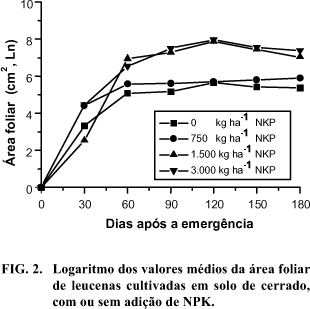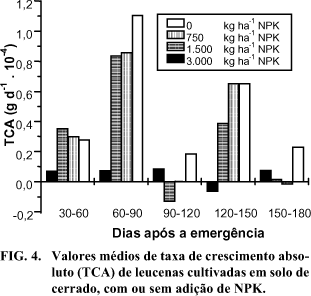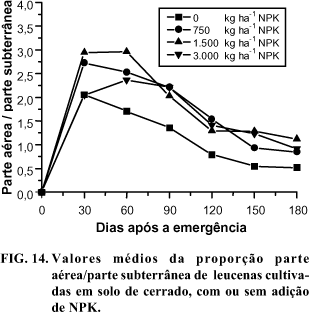Leucaena leucocephala Lam. (De Witt) plants were cultivated in a growth chamber, with 30% of artificial shading and in "cerrado" soil fertilized or not with addition of 0, 750, 1,500 and 3,000 kg ha-1 NPK, in Brazil.. At 180 days after emergence, plants grown in soil without fertilization presented the lowest values of relative growth rate (TCR= 0.028 g g-1 day-1), total biomass (5.2 g), net assimilation rate (TAL = 4.2.10-4 g cm-2 day-1) and did not produce neither flowers or fruit. Among plants grown in fertilized soil, the highest values of TCR (43.92.10-4 g g-1 dia-1) and TAL (15.01 g cm-2 day-1) occurred in leucaenas fertilized with 750 kg ha-1 NPK. Plants fertilized with 1,500 and 3,000 kg ha-1 produced flowers and fruit since 120 days after emergence. Leaf senescence process began at 150 days after emergence, reducing the leaf area, TAL and TCR. Resistence to water stress was greater in 90 day-old plants than in 30 day-old ones. In both cases, the most desiccation resistant plants were those grown in soil with higher NPK rates. An osmotic adjustment aided the plants to survive during the drought period.
Leucaena leucocephala; growth analysis; water stress
























